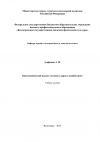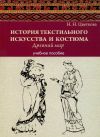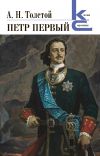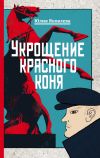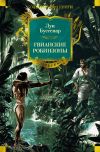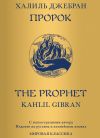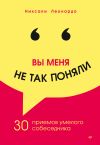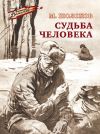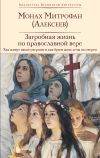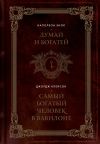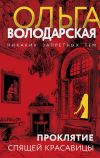Текст книги "English for designers. Английский язык для дизайнеров"

Автор книги: Юлия Зиятдинова
Жанр: Иностранные языки, Наука и Образование
сообщить о неприемлемом содержимом
Текущая страница: 2 (всего у книги 6 страниц) [доступный отрывок для чтения: 2 страниц]
Unit 4
NINETEENTH CENTURY
1. Прочитайте следующие слова вслух и переведите их письменно:
modernity, exponentially, buttons, empire, significance, bustle, purity, inventions, silhouette, curiosity, bust, waist, buttocks, posterior, suppression, rear, pleats, flounces, bows, lieu, apron, polonaise, hips, upholstered, fascination, crinolines, pad, distinctly, medieval, medieval, sleeves, prominence, cravats, lace, inserts, trim, embroidery, tucks, pleats, tulip, collars, bell, suits, fashionable, practical, variation, ties.
2. Прочитайте и переведите следующие глаголы:
to patent, to return, to influence, to define, to amplify, to exploit, to exaggerate, to reduce, to gain, to embrace.
3. Подберите эквивалентный перевод словосочетаний из колонки A в колонке В.


4. Прочитайте и переведите текст.
NINETEENTH CENTURY
The 1800s were a time of modernity. The needle trade grew exponentially due to technological advances. Mass production was possible because of inventions like Elias Howe’s sewing machine in 1846. Machines that specialized in sewing buttons making button holes, and knitting made large production runs a reality. Isaac Singer patented the first home-scaled sewing machine and distributed it widely. At the same time, standard paper pattern became available through mail order. Of great significance, the first modern department store, the Magasin au Bon Marché, opened in Paris as early as 1852; across the Atlantic, Wanamaker’s opened in Philadelphia in 1861.
By the 1820s women’s fashion had moved away from the classically influenced empire style and returned to the corseting and full skirts of the previous era. In the last quarter of the nineteenth century, however, it was the bustle that defined fashion. The conservative Victorian era is known for a prudish societal focus on moral values, especially female purity. Ironically, the fashionable silhouette of the day, although covering most of woman’s body, amplified the hourglass proportions of the bust, waist, and buttocks, eroticizing and idealizing an extreme version of the feminine form. Some liken the allure of this extreme silhouette to the interest in a woman known as Saartjie “Sarah” Baartman, who was exploited as a sideshow attraction called the Hottentot Venus. Baartman was considered an exotic curiosity because of the exaggerated scale of her posterior in relationship to the rest of the frame, a genetic characteristic of the Khoisan people of South Africa, in particular the women. Thus, a fascination with novelty and the uneasy suppression of sexuality could be seen to come together in the Victorian bustle.
The early bustle of 1870s can be described in terms of the lightness of material and lack of decoration. It was often created through the manipulation of the fabric that was draped in the rear, using pleats, flounces, and bows. The front of the silhouette had the appearance of an apron. For a short time, from 1878 to 1883, the bustle disappeared in lieu of a more natural, flat-backed dress. The cuirass bodice, a long waisted bodice that extended below the hips, and the polonaise, a princess sheath dress, achieved this slim shape. The period from 1883 to 1893 constituted the revival of the bustle. This new bustle had the look of an upholstered shelf, due to its large, almost horizontal protrusion. It was further accentuated with heavier fabrics and more ornate decoration. By the end of the 1800s, though, the bustle had been reduced to a small pad that carried into the Edwardian era.
Parallel to mainstream fashion, a movement emerged in the 1860s and 1870s known as artistic and, later, aesthetic dress. In protest against crinolines and restrictive corsets, as well as the idea of mass-produced clothing, a group of artists, writers, and actors, most famously associated with Dante Gabriel Rossetti and William Morris, promoted this looser, distinctly bohemian style that embraced many medieval and Renaissance sensibilities.
With the decline of the bustle, sleeves gained more prominence, culminating in the mid-1890s with gigantic leg-o’muttons offset by a tiny waist. The American artist Charles Dana Gibson captured the ideal in his satirical illustrations of the modern woman. Although she became an icon of the era, the “Gibson Girl” was meant to caricature the sense of competition, independence, and athleticism that defined this new woman – not necessarily traits that were encouraged for genteel ladies. The embellished blouse became a signature of the Gibson Girl, featuring details like lace inserts and trim, embroidery, appliqués11
appliqué (фр.) – аппликация
[Закрыть], faggoting22
faggoting – вышивание мережкой (узор образуется за счет собирания отдельных нитей в пучки)
[Закрыть], tucks, and pleats. She also sported shirt collars with ties, bows or cravats. She wore these tops over skirts shaped like a bell or an inverted tulip. Tailored travelling suits were a fashionable and practical variation of the new look.
(From the book “Form, Fit, and Fashion” by Jay Calderin)
5. Ответьте на вопросы:
→ What do you know about Saartjie Baartman?
→ What do you know about Victorian era?
→ Can you describe fashion of the 19th century?
→ Who became an icon of the era in the end of the 19th century?
6. Переведите следующие предложения письменно.
1. В 1860-е годы в моду вошли кринолины из овальных обручей, которые создавали определенный силуэт юбки.
2. Он изменил пропорции платья с кринолином, предложив завышенную линии талии и отказался от пышных складок на талии.
3. Женский костюм имел профильный силуэт и множество драпировок.
4. Костюм стиля модерн постепенно изменялся, и становились модными съемные рукава до локтя из гипюра.
5. Характерной чертой силуэта женского платья является значительно расширенная, гротескная линия плеч вследствие очень пышных рукавов «фонарик».
7. Переведите следующие слова, используя пример: buttons, pleats, flounces, crinolines, embroidery, faggoting, tucks, collars, bows, cravats, ties, tulip, trim, blouse, sleeves, suits.

8. Прочитайте и переведите текст письменно.
OUTERWEAR
Riding habits consisted of a high-necked, tight-waisted jacket with the fashionable dropped shoulder and huge gigot sleeves, worn over a tall-collared shirt or chemisette, with a long matching petticoat or skirt. Tall top hats with veils were worn.
Shawls were worn with short-sleeved evening gowns early in the decade, but they were not suited to the wide gigot sleeves of the mid 1830s.
Full-length mantles were worn to about 1836, when mantles became shorter. A mantlet33
mantlet – мантилья (короткая накидка, короткий плащ)
[Закрыть] or shawl-mantlet was a shaped garment like a cross between a shawl and a mantle, with points hanging down in front. The burnous44
burnous – бурнус (арабский плащ; просторное женское пальто)
[Закрыть] was a three-quarter length mantle with a hood, named after the similar garment of Arabia. The paletot55
paletot (фр.) ['pæltəu] – свободная, широкая верхняя одежда (пальто, накидка)
[Закрыть] was kneelength, with three cape-collars and slits for the arms, and the pardessus66
pardessus (фр.) [pardəsy] – пальто
[Закрыть] was half or three-quarter length coat with a defined waist and sleeves.
For evening, voluminous mantles of velvet or satin, with fur trim or fur linings in cold climates were worn with the evening gown.
(From the Survey of Historic Costume by Tortora, Phyllis and Keith Eubank)
9. Составьте рассказ о моде 19 века, включающий в себя следующее:
→ Идеал красоты
→ Виды и формы одежды
→ Мужская одежда
→ Женская одежда
→ Обувь
→ Головные уборы, прически, украшения, косметика
Unit 5
EARLY TWENTIETH CENTURY
1. Прочитайте следующие слова и словосочетания вслух и переведите их письменно:
extent, editors, trim details, assumptions, seamstresses, customers, competitors, hourglass-shaped style, assistance, conspicuous, consumption, incredibly, shorter-skirted, upholstered, painstakingly, unthinkable, hips, bosom, indispensable, ribbons, feathers, lace, pantaloons, turbans, evident, felt hats, soberly, superimposing, shimmers, flimsy, fluid lines, diaphanous, imperatives, headgear, immense, gossamery, clinging, sheath, shades, cochineal, devotees, engagements, circumstances, clouds of tulle, undulate, mid-calf, maid.
2. Прочитайте и переведите следующие глаголы:
to purchase, to define, to broaden, to devise, to emerge, to distinguish, to perched on.
3. Подберите эквивалентный перевод словосочетаний из колонки A в колонке В.

4. Прочитайте и переведите текст.
EARLY TWENTIETH CENTURY
Throughout the early 20th century, practically all high fashion originated in Paris and to a lesser extent London. Fashion magazines from other countries sent editors to the Paris fashion shows. Department stores sent buyers to the Paris shows, where they purchased garments to copy (and openly stole the style lines and trim details of others). Both made-to-measure salons and readyto-wear departments featured the latest Paris trends, adapted to the stores’ assumptions about the lifestyles and pocket books of their targeted customers.
At this time in fashion history the division between haute couture and ready-to-wear was not sharply defined. The two separate modes of production were still far from being competitors and they often co-existed in houses where the seamstresses moved freely between made-to-measure and ready-made.
Around the start of the 20th century fashion style magazines began to include photographs and became even more influential than in the future. In cities throughout the world these magazines were greatly sought-after and had a profound effect on public taste. Talented illustrators – among them Paul Iribe, Georges Lepape, Erté, and George Barbier – drew exquisite fashion plates for these publications, which covered the most recent developments in fashion and beauty. Perhaps the most famous of these magazines was La Gazette du bon ton which was founded in 1912 by Lucien Vogel and regularly published until 1925.
1900s
The outfits worn by the fashionable women of the ‘Belle Époque’ (as this era was called by the French) were strikingly similar to those worn in the heyday of the fashion pioneer Charles Worth. By the end of the 19th-century, the horizons of the fashion industry had generally broadened, partly due to the more stable and independent lifestyle many well-off women were beginning to adopt and the practical clothes they demanded. However, the fashions of the La Belle Époque still retained the elaborate, upholstered, hourglass-shaped style of the 19th century. As of yet, no fashionable lady could (or would) dress or undress herself without the assistance of a third party. The constant need for radical change, which is now essential for the survival of fashion within the present system, was still literally unthinkable. The use of different trimmings were all that distinguished one season from the other.
Conspicuous waste and conspicuous consumption defined the fashions of the decade and the outfits of the couturiers of the time were incredibly extravagant, elaborate, ornate, and painstakingly made. The curvaceous S-Bend silhouette dominated fashion up until around 1908. The S~Bend corset was very tightly laced at the waist which forced the hips back and the drooping mono bosom was thrust forward in a pouter pigeon effect creating an S shape. Toward the end of the decade the fashionable silhouette gradually became somewhat more straight and slim, partly due to Paul Poiret’s high-waisted, shorter-skirted Directoire line of clothes.
The MaisonRedfern was the first fashion house to offer women a tailored suit based directly on its male counterpart and the extremely practical and soberly elegant garment soon became an indispensable part of the wardrobe of any well-dressed woman. Another indispensable part of the outfit of the well-dressed woman was the designer hat. Fashionable hats at the time were either tiny little confections that perched on top of the head, or large and wide brimmed, trimmed with ribbons, flowers, and even feathers. Caroline Reboux, Legroux, and E. Lewis were the most soughtafter names of the time. Parasols were still used as decorative accessories and in the summer they dripped with lace and added to the overall elaborate prettiness.
(From the article “Style for all: why fashion, invented by kings, now belongs to all of us” by McDermott, Kathleen)
5. Прочитайте и перескажите текст на русском языке.
1910s

Figure. Dress designed by Paul Poiret
During the early years of the 1910s the fashionable silhouette became much more lithe, fluid and soft than in the 19th century. When the Ballets Russes performed Scheherazade in Paris in 1910, a craze for Orientalism ensued. The couturier Paul Poiret was one of the first designers to translate this vogue into the fashion world. Poiret's clients were at once transformed into harem girls in flowing pantaloons, turbans, and vivid colors and geishas in exotic kimono. Paul Poiret also devised the first outfit which women could put on without the help of a maid. The Art Deco movement began to emerge at this time and its influence was evident in the designs of many couturiers of the time. Simple felt hats, turbans, and clouds of tulle replaced the styles of headgear popular in the 20th century. It is also notable that the first real fashion shows were organized during this period in time, by Jeanne Paquin, one of the first female couturiers, who was also the first Parisian couturier to open foreign branches in London, Buenos Aires, and Madrid.
Two of the most influential fashion designers of the time were Jacques Doucet and Mariano Fortuny. The French designer Jacques Doucet excelled in superimposing pastel colors and his elaborate gossamery dresses suggested the Impressionist shimmers of reflected light. His distinguished customers never lost a taste for his fluid lines and flimsy, diaphanous materials. While obeying imperatives that left little to the imagination of the couturier, Doucet was nonetheless a designer of immense taste and discrimination, a role many have tried since, but rarely with Doucet's level of success.
The Venice-based designer Mariano Fortuny y Madrazo was a curious figure, with very few parallels in any age. For his dress designs he conceived a special pleating process and new dyeing techniques. He gave the name Delphos to his long clinging sheath dresses that undulated with color. Each garment was made of a single piece of the finest silk, its unique color acquired by repeated immersions in dyes whose shades were suggestive of moonlight or of the watery reflections of the Venetian lagoon. Breton straw, Mexican cochineal, and indigo from the Far East were among the ingredients that Fortuny used. Among his many devotees were Eleanora Duse, Isadora Duncan, Cleo de Merode, the MarchesaCasati, Emilienned'Alençon, and Liane de Pougy.
Changes in dress during World War I were dictated more by necessity than fashion. As more and more women were forced to work, they demanded clothes that were better suited to their new activities. Social events had to be postponed in favor of more pressing engagements and the need to mourn the increasing numbers of dead, visits to the wounded, and the general gravity of the time meant that darker colors became the norm. A new monochrome look emerged that was unfamiliar to young women in comfortable circumstances. By 1915 fashionable skirts had risen above the ankle and then later to mid-calf.
(From the book “Paris fashion: a cultural history” by Steele, Valerie)
6. Ответьте на вопросы:
→ Who developed a dress that could be put on without any help of a maid?
→ What silhouette dominated in the beginning of 20 century?
→ How did Jacques Doucet achieve success in fashion?
→ Who made dresses from a single piece of the finest silk?
→ How did the World War I influence the development of fashion?
→ How does the length of skirts change?
7. Переведите следующие предложения письменно на английский язык.
→ В годы первой мировой войны произошла реформа костюма.
→ Реформа костюма предполагала создание практичной, не стесняющей движений одежды, упразднение корсетов, укорочение длинных юбок.
→ С началом войны Дома мод были закрыты, и эта реформа происходила стихийно.
→ Уже в первый год войны длина женских платьев доходила до щиколотки, затем до середины икры.
→ Для одежды того времени характерны мягкие линии силуэта, умеренные объемы.
→ Главной чертой моды этих лет была свобода формы.
→ Для этого периода был характерен овальный силуэт в одежде.
8. Составьте рассказ о модных тенденциях в период первой мировой войны.
Unit 6
GOLDEN AGE OF FRENCH FASHION
1. Прочитайте следующие слова вслух и определите их значение:
radical, pinafores, reluctant, androgynous, embroidery, lingerie, advocate, relaxation, knickers, inches, magnetic, trademarks, influential, notably, flapper, simplicity.
2. Прочитайте и переведите следующие глаголы:
to adopt, to foreshadow, to approach, to diversify, to characterize, to satisfy, to abandon.
3. Подберите эквивалентный перевод словосочетаний из колонки A в колонке В.

4. Прочитайте и переведите текст.
1920s
Soon after the First World War, a radical change came about in fashion. Bouffant coiffures gave way to short bobs, dresses with long trains gave way to above-the-knee pinafores. Corsets were abandoned and women borrowed their clothes from the male wardrobe and chose to dress like boys. Although, at first, many couturiers were reluctant to adopt the new androgynous style, they embraced them wholeheartedly from around 1925. A bust less, waist less silhouette emerged and aggressive dressing-down was mitigated by feather boas, embroidery, and showy accessories. The flapper style (known to the French as the 'garçonne' look) became very popular among young women. The cloche hat was widely-worn and sportswear became popular with both men and women during the decade, with designers like Jean Patou and Coco Chanel popularizing the sporty and athletic look.
The great couturier Coco Chanel was a major figure in fashion at the time, as much for her magnetic personality as for her chic and progressive designs. Chanel helped popularize the bob hairstyle, the little black dress, and the use of jersey knit for women's clothing and also elevated the status of both costume jewelry and knitwear.
Two other prominent French designers of the 1920s were Jeanne Lanvin and Jean Patou. Jeanne Lanvin, who began her career in fashion as a milliner, made such beautiful outfits for her young daughter Marguerite that people started to ask for copies, and Lanvin was soon making dresses for their mothers. Lanvin's name appears in the fashion yearbook from about 1901 onwards. However, it was in the 1920s that she reached the peak of her popularity and success. The Lanvin style embraced the look of the time, with its skillful use of complex trimmings, dazzling embroideries, and beaded decorations in light, clear, floral colors that eventually became a Lanvin trademark. By 1925 Lanvin produced many different products, including sportswear, furs, lingerie, men's fashion, and interior designs. Her global approach to fashion foreshadowed the schemes that all the large contemporary fashion houses would later adopt in their efforts to diversify.
The style of Jean Patou was never mainstream, but full of originality and characterized by a studied simplicity which was to win him fame, particularly in the American markets. Many of his garments, with their clean lines, geometric and Cubist motifs, and mixture of luxury and practicality, were designed to satisfy the new vogue for the outdoor life, and bore a remarkable similarity to modern sportswear. The most famous advocate of his style was Suzanne Lenglen, the legendary tennis champion.

Figure. Fashionable Hollywood actress Louise
In menswear there was a growing mood of informality, among the Americans especially, which was mirrored in fashions that emphasized youthfulness and relaxation. In the past, there was a special outfit for every event in the well-dressed gentleman's day, but young men in the 1920s, no longer afraid to show their youthfulness, began to wear the same soft wool suit all day long. Short suit jackets replaced the old long jackets of the past which were now only worn for formal occasions. Men had a variety of sport clothes available to them, including sweaters and short pants, commonly known as knickers. For evening wear a short tuxedo was more fashionable than the tail-coat, which was now seen as somewhat old-fashioned. The London cut, with its slim lines, loose-fitting sleeves, and padded shoulders, perfected by the English tailor Scholte, was very popular. Fair Isle patterns became very popular for both sexes. Heels, at the time, were often over two inches high and helped popularize the two-tone shoe its one of her trademarks. Salvatore Ferragamo and André Perugia were two of the most influential and respected designers in footwear. Many stars of the silent films had a significant impact on fashion during the 1920s, perhaps most notably Louise Brooks, Gloria Swanson, and Colleen Moore. The lighthearted, forward-looking fashions of the 1920s gradually came to halt after the Wall Street Crash of 1929, and succumbed to a more conservative style. While the flapper look persisted into 1930, it quickly disappeared afterwards, although bell-shaped hats lasted through 1933.
(From the book “Paris fashion: a cultural history” by Steele, Valerie)
5. Ответьте на вопросы:
→ Can you describe changes in fashion after the World War I?
→ What style become very popular?
→ What new tends did Chanel bring in fashion?
→ Who worked in geometric and Cubist motifs?
→ What kind of clothes did men wear?
→ What type of clothes were seen old-fashioned for evening wear?
→ Who popularized the two-tone shoe?
6. Переведите следующие предложения на английский язык.
→ В послевоенный период главным направлением в искусстве был конструктивизм.
→ Костюм 30-х годов олицетворял новый идеал красоты своим кубическим силуэтом, полученным от архитектурных форм и предметов быта.
→ Цветовая гамма выдержана в одном тоне – сером, бежевом, медном, белом и черном.
→ Идеальный внешний облик 30-х годов – стройная фигура с узкой талией и бедрами, плоской грудью, пушистой перманентной завивкой.
7. Прочитайте, переведите текст письменно и озаглавьте его.
Ready-to-wear or prêt-à-porter often abbreviated RTW; «offthe-rack» or «off-the-peg» in casual use) is the term for factory-made clothing, sold in finished condition, in standardized sizes, as distinct from made to measure or bespoke clothing tailored to a particular person's frame. Off-the-peg is sometimes used for items which are not clothing, such as handbags.
Ready-to-wear has rather different connotations in the spheres of fashion and classic clothing. In the fashion industry, designers produce ready-to-wear clothing intended to be worn without significant alteration, because clothing made to standard sizes fits most people. They use standard patterns, factory equipment, and faster construction techniques to keep costs low, compared to a custom-sewn version of the same item. Some fashion houses and fashion designers produce mass-produced and industrially manufactured ready-to-wear lines, while others offer garments that, while not unique, are produced in limited numbers.
8. Перескажите текст упражнения 4, используя фразы в приложении.
Внимание! Это не конец книги.
Если начало книги вам понравилось, то полную версию можно приобрести у нашего партнёра - распространителя легального контента. Поддержите автора!Правообладателям!
Данное произведение размещено по согласованию с ООО "ЛитРес" (20% исходного текста). Если размещение книги нарушает чьи-либо права, то сообщите об этом.Читателям!
Оплатили, но не знаете что делать дальше?

